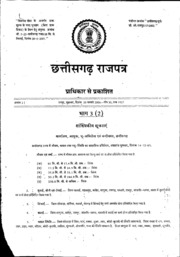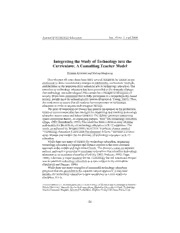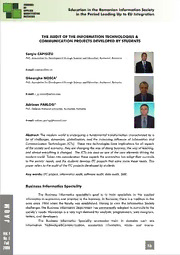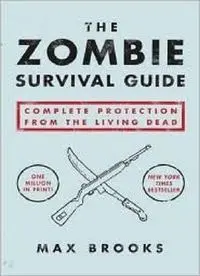
The zombie survival guide: complete protection from the living dead PDF
Preview The zombie survival guide: complete protection from the living dead
Unknown Zombie Survival Guide The zombie survival guide : complete protection from the living dead Max Brooks Converted to Repligo by FuzzyLogic: Mobile.25u.com The Zombie Survival Guide is your key to survival against the hordes of undead who may be stalking you right now. Fully illustrated and exhaustively comprehensive, this book covers everything you need to know, including how to understand zombie physiology and behavior, the most effective defense tactics and weaponry, ways to outfit your home for a long siege, and how to survive and adapt in any territory or terrain. Don’t be carefree and foolish with your most precious asset — life. The Zombie Survival Guide offers complete protection through trusted, proven tips for safeguarding yourself and your loved ones against the living dead. It is a book that can save your life. The zombie survival guide: complete protection from the living dead Illustrations by Max Werner For Mom and Dad. And for Michelle, who makes life worth fighting for. Acknowledgments First and foremost, thanks to Ed Victor for believing. To David, Jan, Sergei, Jacob, Alex, Carley, Sara, Fikhirini, Rene, Paulo, and Jiang for the translations. To Dr. Zane and his team for their field research. To James “The Colonel” Lofton for his strategic perspective. To Professor Sommers for the data. To Sir Ian for the use of his library. To Red and Steve for their help with the cartography. To Manfred for a look through an old museum’s basement. To Artiom for your honesty and courage. To “Joseph” and “Mary” for making a stranger feel welcome in their country. To Chandara, Yusef, Hernan, Taylor, and Moishe for the photographs. To Avi for the transcripts. To Mason for the footage. To M.W. for his illustrations. To Tatsumi for his time and patience. To “Mrs. Malone” for cutting through the red tape. (THANK YOU!) To Josene for the tour. To Tron for a drive by “the place.” To Captain Ashley and the crew of theSau Tome for proving the point. To Alice, Pyotr, Hugh, Telly, Antonio, Hideki, and Dr. Singh for the interviews. To the boys (and girl) at the lab for “you know what.” To Annik for her brilliance with pen and sword. And, of course, to all those who have asked to remain anonymous. The lives you have helped to save will be your greatest credit. Introduction The dead walk among us. Zombies, ghouls—no matter what their label—these somnambulists are the greatest threat to humanity, other than humanity itself. To call them predators and us prey would be inaccurate. They are a plague, and the human race their host. The lucky victims are devoured, their bones scraped clean, their flesh consumed. Those not so fortunate join the ranks of their attackers, transformed into putrid, carnivorous monsters. Conventional warfare is useless against these creatures, as is conventional thought. The science of ending life, developed and perfected since the beginning of our existence, cannot protect us from an enemy that has no “life” to end. Does this mean the living dead are invincible? No. Can these creatures be stopped? Yes. Ignorance is the undead’s strongest ally, knowledge their deadliest enemy. That is why this book was written: to provide the knowledge necessary for survival against these subhuman beasts. Survival is the key word to remember—not victory, not conquest, just survival. This book will not teach you to become a professional zombie hunter. Anyone wishing to devote their life to such a profession must seek training elsewhere. This book was not written for the police, military, or any government agency. These organizations, if they choose to recognize and prepare for the threat, will have access to resources far beyond those of private citizens. It is for them that this survival guide was written—private citizens, people with limited time and resources who nonetheless have refused to be victimized. Naturally, many other skills—wilderness survival, leadership, even basic first aid—will be necessary in any encounter with the living dead. These were not included in this work, as they can be found in conventional texts. Common sense will dictate what else should be studied to complement this manual. Subsequently, all subjects not directly related to the living dead have been omitted. From this book, you will learn to recognize your enemy, to choose the right weapons, about killing techniques, and about preparation and improvisation when on the defense, on the run, or on the attack. It will also discuss the possibility of a doomsday scenario, in which the living dead have replaced humanity as the planet’s dominant species. Do not discount any section of this book as hypothetical drama. Every ounce of knowledge was accumulated by hard-won research and experience. Historical data, laboratory experiments, field research, and eyewitness accounts (including those of the author) have all served to create this work. Even the doomsday scenario is an extrapolation of true-life events. Many actual occurrences are chronicled in the chapter of recorded outbreaks. Studying them will prove that every lesson in this book is rooted in historical fact. That said, knowledge is only part of the fight for survival. The rest must come from you. Personal choice, the will to live, must be paramount when the dead begin to rise. Without it, nothing will protect you. On the last page of this book, ask yourself one question: What will you do—end your existence in passive acceptance, or stand up and shout, “I will not be their victim! I will survive!” The choice is yours. The Undead: Myths and Realities He comes from the grave, his body a home of worms and filth. No life in his eyes, no warmth of his skin, no beating of his breast. His soul, as empty and dark as the night sky. He laughs at the blade, spits at the arrow, for they will not harm his flesh. For eternity, he will walk the earth, smelling the sweet blood of the living, feasting upon the bones of the damned. Beware, for he is the living dead. ObscureHindu TEXT, CIRCA 1000B.C.E. ZOM-BIE: (Zom¢be) n.also ZOM-BIES pl.1. An animated corpse that feeds on living human flesh. 2. A voodoo spell that raises the dead. 3. A Voodoo snake god. 4. One who moves or acts in a daze “like a zombie.” a word of West African origin What is a zombie? How are they created? What are their strengths and weaknesses? What are their needs, their desires? Why are they hostile to humanity? Before discussing any survival techniques, you must first learn what you are trying to survive. We must begin by separating fact from fiction. The walking dead are neither a work of “black magic” nor any other supernatural force. Their origin stems from a virus known as Solanum, a Latin word used by Jan Vanderhaven, who first “discovered” the disease. SOLANUM: THE VIRUS Solanum works by traveling through the bloodstream, from the initial point of entry to the brain. Through means not yet fully understood, the virus uses the cells of the frontal lobe for replication, destroying them in the process. During this period, all bodily functions cease. By stopping the heart, the infected subject is rendered “dead.” The brain, however, remains alive but dormant, while the virus mutates its cells into a completely new organ. The most critical trait of this new organ is its independence from oxygen. By removing the need for this all-important resource, the undead brain can utilize, but is in no way dependent upon, the complex support mechanism of the human body. Once mutation is complete, this new organ reanimates the body into a form that bears little resemblance (physiologically speaking) to the original corpse. Some bodily functions remain constant, others operate in a modified capacity, and the remainder shut down completely. This new organism is a zombie, a member of the living dead. 1. Source Unfortunately, extensive research has yet to find an isolated example of Solanum in nature. Water, air, and soil in all ecosystems, from all parts of the world, have turned up negative, as have their accompanying flora and fauna. At the time of this writing, the search continues. 2. Symptoms The timetable below outlines the process of an infected human (give or take several hours, depending on the individual). Hour 1: Pain and discoloration (brown-purple) of the infected area. Immediate clotting of the wound (provided the infection came from a wound). Hour 5: Fever (99–103 degrees F), chills, slight dementia, vomiting, acute pain in the joints. Hour 8: Numbing of extremities and infected area, increased fever (103–106 degrees F), increased dementia, loss of muscular coordination. Hour 11: Paralysis in the lower body, overall numbness, slowed heart rate. Hour 16: Coma. Hour 20: Heart stoppage. Zero brain activity. Hour 23: Reanimation. 3. Transference Solanum is 100 percent communicable and 100 percent fatal. Fortunately for the human race, the virus is neither waterborne nor airborne. Humans have never been known to contract the virus from elements in nature. Infection can occur only through direct fluidic contact. A zombie bite, although by far the most recognizable means of transference, is by no means the only one. Humans have been infected by brushing their open wounds against those of a zombie or by being splattered by its remains after an explosion. Ingestion of infected flesh (provided the person has no open mouth sores), however, results in permanent death rather than infection. Infected flesh has proven to be highly toxic. No information—historical, experimental, or otherwise—has surfaced regarding the results of sexual relations with an undead specimen, but as previously noted, the nature of Solanum suggests a high danger of infection. Warning against such an act would be useless, as the only people deranged enough to try would be unconcerned for their own safety. Many have argued that, given the congealed nature of undead bodily fluids, the chances of infection from a non-bite contact should be low. However, it must be remembered that even one organism is enough to begin the cycle. 4. Cross-species Infection Solanum is fatal to all living creatures, regardless of size, species, or ecosystem. Reanimation, however, takes place only in humans. Studies have shown that Solanum infecting a non-human brain will die within hours of the death of its host, making the carcass safe to handle. Infected animals expire before the virus can replicate throughout their bodies. Infection from insect bites such as from mosquitoes can also be discounted. Experiments have proven that all parasitic insects can sense and will reject an infected host 100 percent of the time. 5. Treatment Once a human is infected, little can be done to save him or her. Because Solanum is a virus and not a bacteria, antibiotics have no effect. Immunization, the only way to combat a virus, is equally useless, as even the most minute dosage will lead to a full-blown infection. Genetic research is under way. Goals range from stronger human antibodies to resistant cell structure to a counter-virus designed to identify and destroy Solanum. This and other, more radical treatments are still in the earliest stages, with no foreseeable success in the near future. Battlefield experiences have led to the immediate severing of the infected limb (provided this is the location of the bite), but such treatments are dubious at best, with less than a 10 percent success rate. Chances are, the infected human was doomed from the moment the virus entered his or her system. Should the infected human choose suicide, he should remember that the brain must be eliminated first. Cases have been recorded in which recently infected subjects, deceased by means other than the virus, will nonetheless reanimate. Such cases usually occur when the subject expires after the fifth hour of infection. Regardless, any person killed after being bitten or otherwise infected by the undead should be immediately disposed of. (See “Disposal.”) 6. Reanimating The Already Deceased It has been suggested that fresh human corpses could reanimate if Solanum were introduced after their demise. This is a fallacy. Zombies ignore necrotic flesh and therefore could not transfer the virus. Experiments conducted during and after World War II (see “Recorded Attacks”) have proven that injecting Solanum into a cadaver would be futile because a stagnant bloodstream could not transport the virus to the brain. Injection directly into a dead brain would be equally useless, as the expired cells could not respond to the virus. Solanum doesnot create life—it alters it. Zombie Attributes 1. Physical Abilities Too often, the undead have been said to possess superhuman powers: unusual strength, lightning speed, telepathy, etc. Stories range from zombies flying through the air to their scaling vertical surfaces like spiders. While these traits might make for fascinating drama, the individual ghoul is far from a magical, omnipotent demon. Never forget that the body of the undead is, for all practical purposes, human. What changes do occur are in the way this new, reanimated body is used by the now-infected brain. There is no way a zombie could fly unless the human it used to be could fly. The same goes for projecting force fields, teleportation, moving through solid objects, transforming into a wolf, breathing fire, or a variety of other mystical talents attributed to the walking dead. Imagine the human body as a tool kit. The somnambulist brain has those tools, and only those tools, at its disposal. It cannot create new ones out of thin air. But it can, as you will see, use these tools in unconventional combinations, or push their durability beyond normal human limits. A. Sight The eyes of a zombie are no different than those of a normal human. While still capable (given their rate of decomposition) of transmitting visual signals to the brain, how the brain interprets these signals is another matter. Studies are inconclusive regarding the undead’s visual abilities. They can spot prey at distances comparable to a human, but whether they can distinguish a human from one of their own is still up for debate. One theory suggests that the movements made by humans, which are quicker and smoother than those of the undead, is what causes them to stand out to the zombie eye. Experiments have been done in which humans have attempted to confuse approaching ghouls by mimicking their motions and adopting a shambling, awkward limp. To date, none of these attempts have succeeded. It has been suggested that zombies possess night vision, a fact that explains their skill at nocturnal hunting. This theory has been debunked by the fact that all zombies are expert night feeders, even those without eyes. B. Sound There is no question that zombies have excellent hearing. Not only can they detect sound—they can determine its direction. The basic range appears to be the same as that for humans. Experiments with extreme high and low frequencies have yielded negative results. Tests have also shown that zombies are attracted by any sounds, not just those made by living creatures. It has been recorded that ghouls will notice sounds ignored by living humans. The most likely, if unproven, explanation is that zombies depend on all their senses equally. Humans are sight-oriented from birth, depending on other senses only if the primary one is lost. Perhaps this is not a handicap shared by the walking dead. If so, it would explain their ability to hunt, fight, and feed in total darkness. C. Smell Unlike with sound, the undead have a more acute sense of smell. In both combat situations and laboratory tests, they have been able to distinguish the smell of living prey above all others. In many cases, and given ideal wind conditions, zombies have been known to smell fresh corpses from a distance of more than a mile. Again, this does not mean that ghouls have a greater sense of smell than humans, simply that they rely on it more. It is not known exactly what particular secretion signals the presence of prey: sweat, pheromones, blood, etc. In the past, people seeking to move undetected through infested areas have attempted to “mask” their human scent with perfumes, deodorants, or other strong-smelling chemicals. None were successful. Experiments are now under way to synthesize the smells of living creatures as a decoy or even repellent to the walking dead. A successful product is still years away. D. Taste Little is known about the altered taste buds of the walking dead. Zombies do have the ability to tell human flesh apart from that of animals, and they prefer the former. Ghouls also have a remarkable ability to reject carrion in favor of freshly killed meat. A human body that has been dead longer than twelve to eighteen hours will be rejected as food. The same goes for cadavers that have been embalmed or otherwise preserved. Whether this has anything to do with “taste” is not yet certain. It may have to do with smell or, perhaps, another instinct that has not been discovered. As to exactly why human flesh is preferable, science has yet to find an answer to this confounding, frustrating, terrifying question. E. Touch Zombies have, literally, no physical sensations. All nerve receptors throughout the body remain dead after reanimation. This is truly their greatest and most terrifying advantage over the living. We, as humans, have the ability to experience physical pain as a signal of bodily damage. Our brain classifies such sensations, matches them to the experience that instigated them, and then files the information away for use as a warning against future harm. It is this gift of physiology and instinct that has allowed us to survive as a species. It is why we value virtues such as courage, which inspires people to perform actions despite warnings of danger. The inability to recognize and avoid pain is what makes the walking dead so formidable. Wounds will not be noticed and, therefore, will not deter an attack. Even if a zombie’s body is severely damaged, it will continue to attack until nothing remains. F. Sixth Sense Historical research, coupled with laboratory and field observation, have shown that the walking dead have been known to attack even when all their sensory organs have been damaged or completely decomposed. Does this mean that zombies possess a sixth sense? Perhaps. Living humans use less than 5 percent of their brain capacity. It is possible that the virus can stimulate another sensory ability that has been forgotten by evolution. This theory is one of the most hotly debated in the war against the undead. So far, no scientific evidence has been found to support either side. G. Healing Despite legends and ancient folklore, undead physiology has been proven to possess no powers of regeneration. Cells that are damaged stay damaged. Any wounds, no matter what their size and nature, will remain for the duration of that body’s reanimation. A variety of medical treatments have been attempted to stimulate the healing process in captured ghouls. None were successful. This inability to self-repair, something that we as living beings take for granted, is a severe disadvantage to the undead. For example, every time we physically exert ourselves, we tear our muscles. With time, these muscles rebuild to a stronger state than before. A ghoul’s muscle mass will remain damaged, reducing its effectiveness every time it is used. H. Decomposition The average zombie “life span”—how long it is able to function before completely rotting away—is estimated at three to five years. As fantastic as this sounds—a human corpse able to ward off the natural effects of decay—its cause is rooted in basic biology. When a human body dies, its flesh is immediately set upon by billions of microscopic organisms. These organisms were always present, in the external environment and within the body itself. In life, the immune system stood as a barrier between these organisms and their target. In death, that barrier is removed. The organisms begin multiplying exponentially as they proceed to eat and, thereby, break down the corpse on a cellular level. The smell and discoloration associated with any decaying meat are the biological process of these microbes at work. When you order an “aged” steak, you are ordering a piece of meat that has begun to rot, its formerly toughened flesh softened by microorganisms breaking down its sturdy fiber. Within a short time, that steak, like a human corpse, will dissolve to nothing, leaving behind only material too hard or innutritious for any microbe, such as bone, teeth, nails, and hair. This is the normal cycle of life, nature’s way of recycling nutrients back into the food chain. To halt this process, and preserve dead tissue, it is necessary to place it in an environment unsuitable for bacteria, such as in extreme low or high temperatures, in toxic chemicals such as formaldehyde, or, in this case, to saturate it with Solanum. Almost all the microbe species involved in normal human decomposition have repeatedly rejected flesh infected by the virus, effectively embalming the zombie. Were this not the case, combating the living dead would be as easy as avoiding them for several weeks or even days until they rotted away to bones. Research has yet to discover the exact cause of this condition. It has been determined that at least some microbe species ignore the repelling effects of Solanum—otherwise, the undead would remain perfectly preserved forever. It has also been determined that natural conditions such as moisture and temperature play an important role as well. Undead that prowl the bayous of Louisiana are unlikely to last as long as those in the cold, dry Gobi desert. Extreme situations, such as deep freezing or immersion in preservative fluid, could, hypothetically, allow an undead specimen to exist indefinitely. These techniques have been known to allow zombies to function for decades, if not centuries. (See “Recorded Attacks.”) Decomposition does not mean that a member of the walking dead will simply drop. Decay may affect various parts of the body at different times. Specimens have been found with brains intact but nearly disintegrated bodies. Others with partially rotted brains may control some bodily functions but be completely paralyzed in others. A popular theory has recently circulated that attempts to explain the story of the ancient Egyptian mummy as one of the first examples of an embalmed zombie. The preservation techniques allowed it to function several thousand years after being entombed. Anyone with a rudimentary knowledge of ancient Egypt would find this story almost laughably untrue: The most important and complicated step in preparing a pharaoh for burial was the removal of the brain! I. Digestion Recent evidence has once and for all discounted the theory that human flesh is the fuel for the undead. A zombie’s digestive tract is completely dormant. The complex system that processes food, extracts nutrition, and excretes waste does not factor into a zombie’s physiology. Autopsies conducted on neutralized undead have shown that their “food” lies in its original, undigested state at all sections of the tract. This partially chewed, slowly rotting matter will continue to accumulate, as the zombie devours more victims, until it is forced through the anus, or literally bursts through the stomach or intestinal lining. While this more dramatic example of non-digestion is rare, hundreds of eyewitness reports have confirmed undead to have distended bellies. One captured and dissected specimen was found to contain 211 pounds of flesh within its system! Even rarer accounts have confirmed that zombies continue to feed long after their digestive tracts have exploded from within. J. Respiration The lungs of the undead continue to function in that they draw air into and expel it from the body. This function accounts for a zombie’s signature moan. What the lungs and body chemistry fail to accomplish, however, is to extract oxygen and remove carbon dioxide. Given that Solanum obviates the need for both of these functions, the entire human respiratory system is obsolete in the body of a ghoul. This explains how the living dead can “walk underwater” or survive in environments lethal to humans. Their brains, as noted earlier, are oxygen-independent. K. Circulation It would be inaccurate to say that zombies have no heart. It wouldnot be inaccurate, however, to say that they find no use for it. The circulatory system of the undead is little more than a network of useless tubes filled with congealed blood. The same applies to the lymphatic system as well as all other bodily fluids. Although this mutation would appear to give the undead one more advantage over humanity, it has actually proved to be a godsend. The lack of fluid mass prevents easy transmission of the virus. Were this not true, hand-to-hand combat would be nearly impossible, as the defending human would almost certainly be splattered with blood and/or other fluids. L. Reproduction Zombies are sterile creatures. Their sexual organs are necrotic and impotent. Attempts have been made to fertilize zombie eggs with human sperm and vice versa. None has been successful. The undead have also shown no signs of sexual desire, either for their own species or for the living. Until research can prove otherwise, humanity’s greatest fear—the dead reproducing the dead—is a comforting impossibility. M. Strength Ghouls possess the same brute force as the living. What power can be exerted depends greatly on the individual zombie. What muscle mass a person has in life would be all he possesses in death. Unlike a living body, adrenal glands have not been known to function in the dead, denying zombies the temporary burst of power we humans enjoy. The one solid advantage the living dead do possess is amazing stamina. Imagine working out, or any other act of physical exertion. Chances are that pain and exhaustion will dictate your limits. These factors do not apply to the dead. They will continue an act, with the same dynamic energy, until the muscles supporting it literally disintegrate. While this makes for progressively weaker ghouls, it allows for an all-powerful first attack. Many barricades that would have exhausted three or even four physically fit humans have fallen to a single determined zombie. N. Speed The “walking” dead tend to move at a slouch or limp. Even without injuries or advanced decomposition, their lack of coordination makes for an unsteady stride. Speed is mainly determined by leg length. Taller ghouls have longer strides than their shorter counterparts. Zombies appear to be incapable of running. The fastest have been observed to move at a rate of barely one step per 1.5 seconds. Again, as with strength, the dead’s advantage over the living is their tirelessness. Humans who believe they have outrun their undead pursuers might do well to remember the story of the tortoise and the hare, adding, of course, that in this instance the hare stands a good chance of being eaten alive. O. Agility The average living human possesses a dexterity level 90 percent greater than the strongest ghoul. Some of this comes from the general stiffness of necrotic muscle tissue (hence their awkward stride). The rest is due to their primitive brain functions. Zombies have little hand-eye coordination, one of their greatest weaknesses. No one has ever observed a zombie jumping, either from one spot to another or simply up and down. Balancing on a narrow surface is similarly beyond their ability. Swimming is also a skill reserved for the living. The theory has been put forth that, if an undead corpse were to be bloated enough to rise to the surface, it could present a floating hazard. This is rare, however, as the slow rate of decomposition would not allow by-product gas to accumulate. Zombies who walk or fall into bodies of water will more likely find themselves wandering aimlessly across the bottom until eventually dissolving. They can be successful climbers, but only in certain circumstances. If zombies perceive prey above them, for example, in the second story of a house, they will always attempt to climb to it. Zombies will try to scale any surface no matter how unfeasable or even impossible. In all but the easiest situations, these attempts have met with failure. Even in the case of ladders, when simple hand-over-hand coordination is required, only one in four zombies will succeed. 2. Behavioral Patterns A. Intelligence It has been proven, time and again, that our greatest advantage over the undead is our ability to think. The mental capacity of the average zombie ranks somewhere beneath that of an insect. On no occasion have they shown any ability to reason or employ logic. Attempting to accomplish a task, failing, then by trial and error discovering a new solution, is a skill shared by many members of the animal kingdom but lost on the walking dead. Zombies have repeatedly failed laboratory intelligence tests set at the level of rodents. One field case showed a human standing at one end of a collapsed bridge with several dozen zombies on the other side. One by one, the walking dead tumbled over the edge in a futile attempt to reach him. At no time did any of them realize what was happening and change their tactics in any way. Contrary to myth and speculation, zombies have never been observed using tools of any kind. Even picking up a rock to use as a weapon is beyond their grasp. This simple task would prove the basic thought process involved in realizing that the rock is a more efficient weapon than the naked hand. Ironically, the age of artificial intelligence has enabled us to identify more easily with the mind of the zombie than that of our more “primitive” ancestors. With rare exceptions, even the most advanced computers do not have the ability to think on their own. They do what they are programmed to do, nothing more. Imagine a computer programmed to execute one function. This function cannot be paused, modified, or erased. No new data can be stored. No new commands can be installed. This computer will perform that one function, over and over, until its power source eventually shuts down. This is the zombie brain. An instinct-driven, unitask machine that is impervious to tampering and can only be destroyed. B. Emotions Feelings of any kind are not known to the walking dead. Every form of psychological warfare, from attempts at enraging the undead to provoking pity have all met with disaster. Joy, sadness, confidence, anxiety, love, hatred, fear—all of these feelings and thousands more that make up the human “heart” are as useless to the living dead as the organ of the same name. Who knows if this is humanity’s greatest weakness or strength? The debate continues, and probably will forever. C. Memories A modern conceit is that a zombie retains the knowledge of its former life. We hear stories of the dead returning to their places of residence or work, operating familiar machinery, or even showing acts of mercy to loved ones. In truth, not a shred of proof exists to support this wishful thinking. Zombies could not possibly retain memories of their former lives in either the conscious or subconscious mind, because neither exist! A ghoul will not be distracted by the family pet, living relatives, familiar surroundings, etc. No matter who a person was in his former life, that person is gone, replaced by a mindless automaton with no instinct other than for feeding. This begs the question: Why do zombies prefer urban areas to the countryside? First, the undead do not prefer cities, but simply remain where they are reanimated. Second, the main reason zombies tend to stay in cities instead of fanning out into the countryside is because an urban zone holds the highest concentration of prey. D. Physical Needs Other than hunger (discussed later), the dead have shown none of the physical wants or needs expressed in mortal life. Zombies have never been observed to sleep or rest under any circumstances. They have not reacted to extreme heat or cold. In harsh weather, they have never sought shelter. Even something as simple as thirst is unknown to the living dead. Defying all laws of science, Solanum has created what could be described as a completely self-sufficient organism. E. Communication Zombies have no language skills. Although their vocal cords are capable of speech, their brain is not. The only vocal ability appears to be a deep-throated moan. This moan is released when zombies identify prey. The sound will remain low and steady until physical contact is made. It will then shift in tone and volume as the zombie commences its attack. This eerie sound, so typically associated with the walking dead, serves as a rallying cry for other zombies and, as has been recently discovered, is a potent psychological weapon. (See “On the Defense.”) F. Social Dynamics Theories have always proliferated that the undead function as a collective force, from an army controlled by Satan to an insect-like pheromone-driven hive to the most recent notion that they achieve group consensus by telepathy. The truth is that zombies have no social organization to speak of. There is no hierarchy, no chain of command, no drive toward any type of collectivization. A horde of the undead, regardless of size, regardless of appearance, is simply a mass of individuals. If several hundred ghouls converge on a victim’s location, it is because each one is drawn by its own instinct. Zombies appear to be unaware of one another. Individuals have never been observed to react to the sight of one another at any range. This goes back to the question of sense: How does a zombie distinguish between one of its own and a human or other prey at the same range? The answer has yet to be found. Zombies do avoid one another in the same way they avoid inanimate objects. When they bump into one another, they make no attempt to connect or communicate. Zombies feasting on the same corpse wil tug repeatedly on the meat in question rather than shove a competitor out of the way. The only suggestion of communal effort is seen in notorious swarm attacks: the moan of a ghoul calling others within earshot. Once they hear the wail, other walking dead will almost always converge on its source. An early study theorized that this was a deliberate act, that a scout used its moan to signal the others to attack. However, we now know that it happens purely by accident. The ghoul that moans at the detection of prey does so as an instinctive reaction, not as an alert. G. Hunting Zombies are migratory organisms, with no regard for territory or concept ofhome. They will travel miles and perhaps, given time, cross continents in their search for food. Their hunting pattern is random. Ghouls will feed at night and during the day. They will stumble through an area rather than deliberately searching it. Certain zones or structures will not be singled out as more likely to contain prey. For example, some have been known to search farmhouses and other rural structures while others in the same group have moved by without even a glance. Urban zones take more time to explore, which is why the undead remain longer in these areas, but no building will take precedence over another. Zombies appear to be totally unaware of their surroundings. They do not, for example, move their eyes in a way that would take in the information of a new setting. Shuffling silently, with a thousand-yard stare, they will wander aimlessly, regardless of location, until prey is detected. As discussed earlier, the undead possess an uncanny ability to home in on a victim’s precise location. Once contact is made, the previously silent, oblivious automaton transforms into something more closely related to a guided missile. The head turns immediately in the direction of its victim. The jaw drops, lips retract, and, from the depths of its diaphragm, comes the moan. Once contact is made, zombies cannot be distracted by any means. They will continue to pursue their prey, stopping only if they lose contact, make a successful kill, or are destroyed. H. Motivation Why do the undead prey upon the living? If it has been proven that human flesh serves no nutritional purpose, why does their instinct drive them to murder? The truth eludes us. Modern science, combined with historical data, has shown that living humans are not the only delights on the undead menu. Rescue teams entering an infested area have consistently reported them stripped of all life. Any creatures, no matter what their size or species, will be consumed by an attacking zombie. Human flesh, however, will always be preferable to other life forms. One experiment presented a captured specimen with two identical cubes of meat: one human, one animal. The zombie repeatedly chose the human. Reasons for this are still unknown. What can be confirmed, beyond any shadow of doubt, is that instinct brought on by Solanum drives the undead to kill and devour any living creature they discover. There appear to be no exceptions. I. Killing the Dead While destroying a zombie may be simple, it is far from easy. As we have seen, zombies require none of the physiological functions that humans need to survive. Destruction or severe damage of the circulatory, digestive, or respiratory system would do nothing to a member of the walking dead, as these functions no longer support the brain. Simply put, there are thousands of ways to kill a human—and only one to kill a zombie. The brain must be obliterated, by any means possible. J. Disposal Studies have shown that Solanum can still inhabit the body of a terminated zombie for up to forty-eight hours. Exercise extreme care when disposing of undead corpses. The head in particular possesses the most serious hazard, given its concentration of the virus. Never handle an undead corpse without protective clothing. Treat it as you would any toxic, highly lethal material. Cremation is the safest, most effective way of disposal. Despite rumors that a pile of burning corpses will spread Solanum in a cloud of smoking plague, common sense would dictate that any virus is unable to survive intense heat, to say nothing of an open flame. K. Domestication? To reiterate, the zombie brain has proved, so far, to be tamper-proof. Experiments ranging from chemicals to surgery to electromagnetic waves have yielded negative results. Behavioral modification therapy and other such attempts to train the living dead like some kind of pack animal have similarly met with failure. Again, the machine cannot be rewired. It will exist as is, or it will not exist at all. The Voodoo Zombie If zombies are the creation of a virus and not black magic, then how does this explain the so-called “voodoo zombie,” a person who has died, been raised from his grave, and is doomed to spend eternity as a slave of the living? Yes, it is true that the word “zombie” originally comes from the Kimbundu word “nzúmbe,” a term describing a dead person’s soul, and yes, zombies and zombification are integral parts of the Afro-Caribbean religion known as voodoo. However, the origin of their name is the only similarity between the voodoo zombie and the viral zombie. Although it is said that voodoo houngans (priests) can turn humans into zombies by magical means, the practice is rooted in hard, undeniable science. “Zombie powder,” the tool used by the houngan for zombification, contains a very powerful neurotoxin (the exact ingredients are a closely guarded secret). The toxin temporarily paralyzes the human nervous system, creating a state of extreme hibernation. With the heart, lungs, and all other bodily functions operating at minimal levels, it would be understandable if an inexperienced coroner declared the paralyzed subject to be dead. Many humans have been buried while in such a state, only to awaken screaming in the pitch darkness of their coffin. So what makes this living human being a zombie? The answer is simple: brain damage. Many who are buried alive quickly use up the air inside their coffins. Those that are recovered (if they are lucky) almost always suffer brain damage from lack of oxygen. These poor souls shamble about with little cognitive skills, or, indeed, free will, and are often mistaken for the living dead. How can you distinguish a voodoo zombie from the genuine article? The telltale signs are obvious. 1. Voodoo zombies show emotion. People suffering from zombie powder–induced brain damage are still capable of all normal human feelings. They smile, cry, even growl with anger if hurt or otherwise provoked (something real zombies would never do). 2. Voodoo zombies exhibit thought. As has been stated before, when a real zombie encounters you it will immediately home in like a smart bomb. A voodoo zombie will take a moment to try to figure out who or what you are. Maybe it will come toward you, maybe it will recoil, maybe it will continue its observation as its damaged brain attempts to analyze the information given it. What a voodoo zombie willnot do is raise its arms, drop its jaw, unleash a hellish moan, and stumble directly toward you. 3. Voodoo zombies feel pain. A voodoo zombie that trips and falls will undoubtedly hold its bruised knee and whimper. Likewise, one already suffering from some other wound will nurse it, or, at the very least, be aware of the wound’s existence. Voodoo zombies will not ignore deep gashes in their bodies like a real zombie would. 4. Voodoo zombies recognize fire. This is not to say that they are afraid of open flames. Some that have suffered severe brain damage may not remember what fire is. They will stop to examine it, perhaps even reach out to touch it, but they will recoil once they realize it causes pain. 5. Voodoo zombies recognize their surroundings. Unlike real zombies, who only recognize prey, voodoo zombies will react to sudden changes in light, sound, taste, and smell. Voodoo zombies have been observed watching television or brightly flashing lights, listening to music, cringing at thunder, and even taking notice of one another. This last fact has been critical in several cases of mis- identification. Had the zombies in question not reacted to each other (they looked at each other, made noises, even touched each other’s faces), they might have been accidentally exterminated. 6. Voodoo zombies do NOT have hypersense. A human who has suffered the debilitating effects of zombie powder is still a sight-dependent human. He cannot operate perfectly in the dark, hear a footstep at 500 yards, or smell a living being on the wind. Voodoo zombies can actually be surprised by someone walking up behind them. This is not recommended, however, as a frightened zombie might react in anger. 7. Voodoo zombies can communicate. While this is not always the case, many of these individuals can respond to audiovisual signals. Many understand words; some even comprehend simple sentences. Many voodoo zombies possess the ability to speak, simply, of course, and rarely for extended conversations. 8. Voodoo zombies can be controlled. While not always true, many brain damaged humans have lost much of their self-realization, making them very susceptible to suggestion. Simply shouting for a subject to halt or even go away can be enough to get rid of a voodoo zombie. This has created the dangerous situation of confused people believing they could control or train true zombies. Several times headstrong humans have insisted they could simply command their living dead attackers to stop. As cold, rotting hands grabbed their limbs and dirty, worn teeth bit into their flesh, these people discovered, too late, what they were truly dealing with. These guidelines should give you a good idea of how to tell a voodoo zombie from a true zombie. One final note: Voodoo zombies are almost always encountered in sub-Saharan Africa, the Caribbean, Central and South America, and the southern United States. Although it is not impossible to find someone who has been turned into a zombie by a houngan elsewhere, the chances of such an encounter are slim. The Hollywood Zombie Since the living dead first stepped onto the silver screen, their greatest enemy has not been hunters, but critics. Scholars, scientists, even concerned citizens have all argued that these movies depict the living dead in a fantastic, unrealistic fashion. Visually stunning weapons, physically impossible action sequences, larger-than-life human characters, and, above all, magical, invincible, even comical ghouls have all added their colors to the controversial rainbow that is “the Zombie Movie.” Further criticism argues that this “style over substance” approach to somnambulist cinema teaches human viewers lessons that may get them killed in a real encounter. These serious charges demand an equally serious defense. While some zombie movies are based on actual events*, their goal, indeed the goal of almost every movie in every genre, has always been, first and foremost, to entertain. Unless we are discussing pure documentaries (and even some of those are “sweetened”), moviemakers must take some artistic license to make their work more palatable to the audience. Even movies that are based on actual events will sacrifice pure reality for good storytelling. Certain characters will be an amalgam of real-life individuals. Others may be purely fictional in order to explain certain facts, facilitate the plotline, or simply add flavor to the scene. One might argue that the role of the artist is to challenge, educate, and enlighten her audience. That may be true, but try imparting knowledge to an audience who has either left or fallen asleep within the first ten minutes of the picture. Accept this basic rule of moviemaking and you will understand why Hollywood zombie films stray, in some cases wildly, from the reality on which they are based. In short, use these photo-plays as their makers intended: as a source of temporary, lighthearted entertainment and not a visual aid to your survival. Outbreaks Although each zombie attack is different, given the number, terrain, reaction of the general populace, etc., its level of intensity can be measured in four distinct classes. Class 1 This is a low-level outbreak, usually in a Third World country or First World rural area. The number of zombies in this class of outbreak ranges between one and twenty. Total human casualties (including those infected) range from one to fifty. The total duration, from the first case to the last (known), will range between twenty-four hours and fourteen days. The infested area will be small, no larger than a twenty-mile radius. In many cases, natural boundaries will determine its limits. Response will be light, either exclusively civilian or with some additional help from local law enforcement. Media coverage will be light, if present at all. If the media is present, look for common stories like homicides or “accidents.” This is the most common type of outbreak and also the easiest to go unnoticed. Class 2 Urban or densely populated rural areas are included in this level of outbreak. Total zombies will range between twenty and one hundred. Total human casualties may reach as high as several hundred. The duration of a Class 2 attack may last no longer than a Class 1 outbreak. In some cases, the larger number of zombies will spark a more immediate response. A rural, sparsely populated outbreak may extend to a hundred-mile radius, while an urban outbreak may encompass only several blocks. Suppression will almost certainly be organized. Bands of civilians will be replaced by local, state, even federal law enforcement. Look for an additional, if low-level, military response, the National Guard in the United States or its equivalent abroad. Most often, so as to ease panic, these units will take a more noncombatant role, providing medical assistance, crowd control, and logistical support. Class 2 outbreaks almost always attract the press. Unless the attack occurs in a truly isolated area of the world, or one where the media is strictly controlled, the story will be reported. This does not mean, however, that it will be reported accurately. Class 3 A true crisis. Class 3 outbreaks, more than any other, demonstrate the clear threat posed by the living dead. Zombies will number in the thousands, encompassing an area of several hundred miles. The duration of the attack and a possible lengthy mop-up process could last as long as several months. There will be no chance for a press blackout or cover-up. Even without media attention, the sheer magnitude of the attack will leave too many eyewitnesses. This is a full-blown battle, with law enforcement replaced by units of the regular military. A state of emergency will be declared for the infested zone, as well as the neighboring areas. Expect martial law, restricted travel, rationed supplies, federalized services, and strictly monitored communication. All these measures, however, will take time to implement. The initial phase will be one of chaos as those in power come to grips with the crisis. Riots, looting, and widespread panic will add to their difficulties, further delaying an effective response. While this is happening, those living within the infested area will be at the mercy of the undead. Isolated, abandoned, and surrounded by ghouls, they will have only themselves to depend on. Class 4 (See “Living in an Undead World.”) Detection Every undead outbreak, regardless of its class, has a beginning. Now that the enemy has been defined, the next step is early warning. Knowing what a zombie is will not help if you are unable to recognize an outbreak before it’s too late. This does not entail building a “zombie command post” in your basement, sticking pins in a map, and huddling around the shortwave radio. All it requires is looking for signs that would slip by the untrained mind. These signs include: 1. Homicides in which the victims were executed by head shots or decapitation. It has happened many times: People recognize an outbreak for what it is and try to take matters into their own hands. Almost always, these people are declared murderers by the local authorities and prosecuted as such. 2. Missing persons, particularly in wilderness or uninhabited areas. Pay careful attention if one or more of the search members end up missing. If the story is televised or photographed, watch to see what level of armament the search parties carry. Any more than one rifle per group could mean that this is more than just a simple rescue operation. 3. Cases of “violent insanity” in which the subject attacked friends or family without the use of weapons. Find out if the attacker bit or tried to bite his victims. If so, are any of the victims still in the hospital? Try to discover if any of these victims mysteriously died within days of their bite. 4. Riots or other civil disturbances that began without provocation or other logical cause. Common sense will dictate that violence on any group level does not simply occur without a catalyst such as racial tension, political actions, or legal decisions. Even socalled “mass hysteria” can always be traced to a root source. If none can be found, the answer may lie elsewhere. 5. Disease-based deaths in which either the cause is undetermined or seems highly suspect. Deaths from infectious disease are rare in the industrialized world, compared to a century ago. For this reason, new outbreaks always make the news. Look for those cases in which the exact nature of the disease is unexplained. Also, be on the alert for suspicious explanations such as West Nile virus or “mad cow” disease. Either could be examples of a cover-up.
The list of books you might like

The Strength In Our Scars

The 48 Laws of Power

Mind Management, Not Time Management

The Mountain Is You
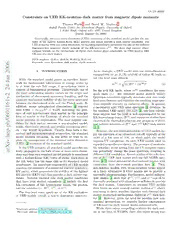
Constraints on UED KK-neutrino dark matter from magnetic dipole moments

Convergent close-coupling calculations of two-photon double ionization of helium

SQE Services Agreement
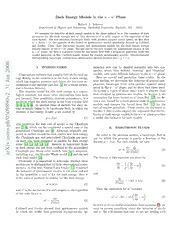
Dark Energy Models in the w - w' Plane
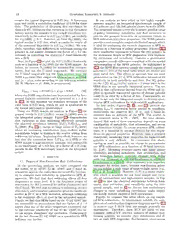
Optical Star-Formation Rate Indicators

Это было навсегда. 1968-1985.
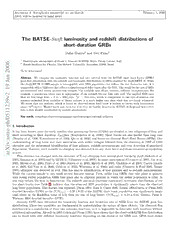
The BATSE-Swift luminosity and redshift distributions of short-duration GRBs
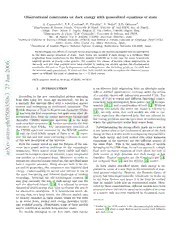
Observational constraints on dark energy with generalized equations of state

Ken Schultz's field guide to saltwater fish

DTIC ADA442146: Performance of Polymer-Encased Concrete Walls Subjected to Blast Loads
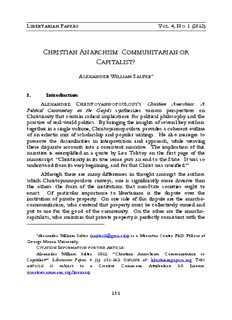
C ANARCHISM COMMUNITARIAN OR CAPITALIST - Libertarian Papers
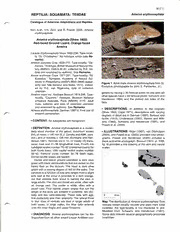
Ameiva erythrocephala
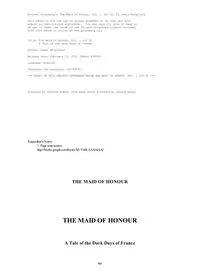
Maid of Honour A Tale of the Dark Ages Vol I

Regionale plastische und rekonstruktive Chirurgie im Kindesalter

C. S. Friedman - This Alien Shore
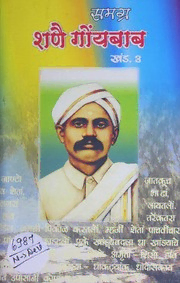
समग्र शणै गोंयबाब -3
